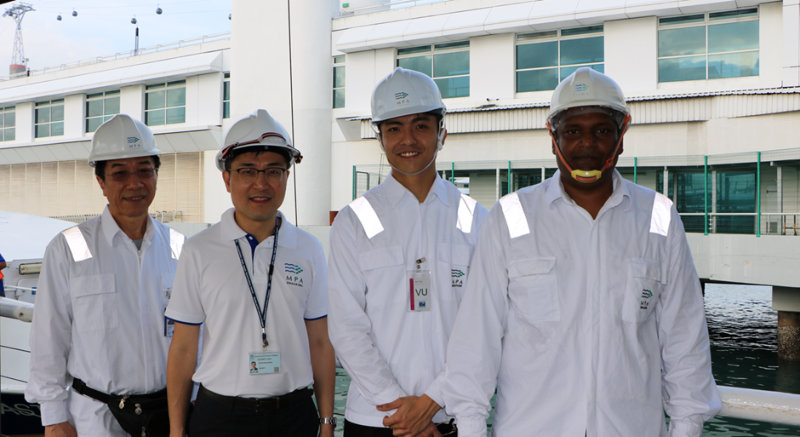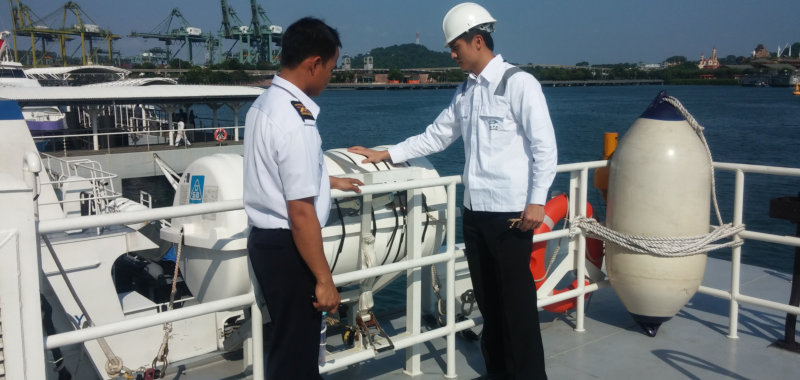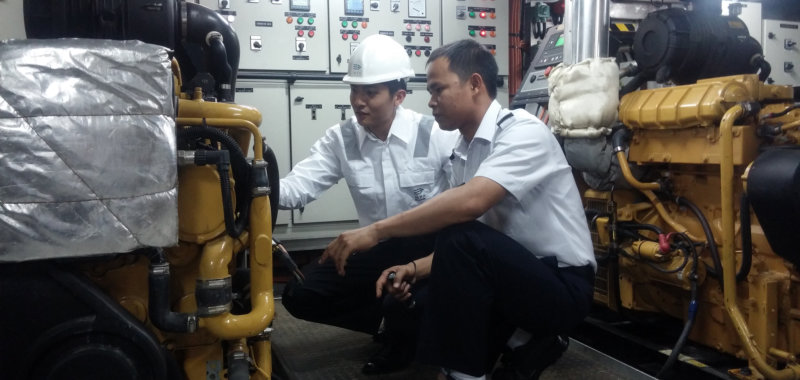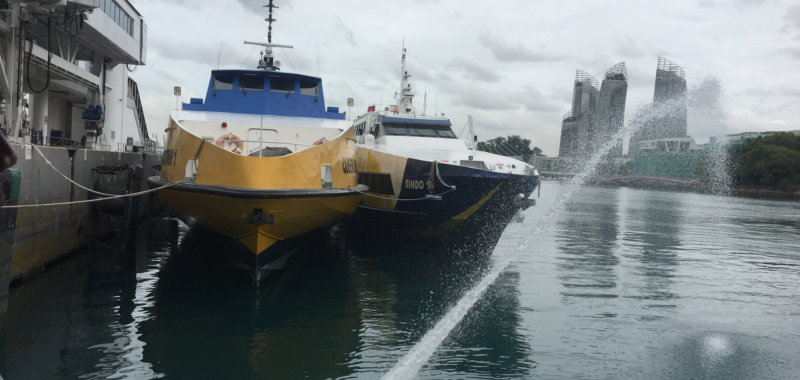MPA stepped up inspection of passenger ferries to raise overall safety standards
In an effort to ramp up the safety standards of passenger ferries and prevent accidents such as collision, grounding or fire, a Concentrated Inspection Campaign (CIC) on Passenger Ferry Safety was conducted by the Maritime and Port Authority of Singapore (MPA) from January to March this year. Over 120 spot checks and detailed inspections were carried out on all ferries that operate between Singapore and Indonesia.

MPA Chief Executive, Mr Andrew Tan (second from left) joins FSC surveyors in conducting a surprise ferry inspection as part of MPA’s efforts to promote safe practice at sea.
The CIC focused on safety of navigation, proper maintenance of radio and navigation equipment, operational readiness of fire protection and life-saving appliances, the familiarity of the crew with their duties and responsibilities, and their ability to respond effectively to shipboard emergencies. During the CIC inspections, charts were inspected to ensure that they are adequate and up-to-date, and that the crew monitors the ship’s passage. Fire detection and alarm systems, fire pumps and proper engine room house-keeping were verified. Safety briefings and public address systems on board were also checked to ensure they are in order.

Liferafts are inspected to ensure they are properly serviced, and their containers are in good condition and properly stowed with a float-free arrangement.

Main and auxiliary engines on the ferries are checked for oil leakages, exposed electrical wiring, and other abnormal signs of running.
Ferries were subject to more detailed inspections when not in operation. Besides a thorough inspection of the hull, machinery and equipment of the ferries, the proficiency of the crew in carrying out fire and abandon-ship drills was also evaluated. The crew and ferry operators were required to promptly rectify any deficiencies found during the inspection.

Testing the emergency fire pump and verifying the fire hoses and hydrants
At the end of the CIC, the crew on board the passenger ferries were found to be more alert and familiar with their duties and responsibilities during normal and emergency situations. Nonetheless, there are areas of improvement that have to be worked out with the ferry operators.
The results of the CIC will be shared with the ferry operators to help them improve their safety management systems and promote safe practices on board their ferries. Stay tuned.
